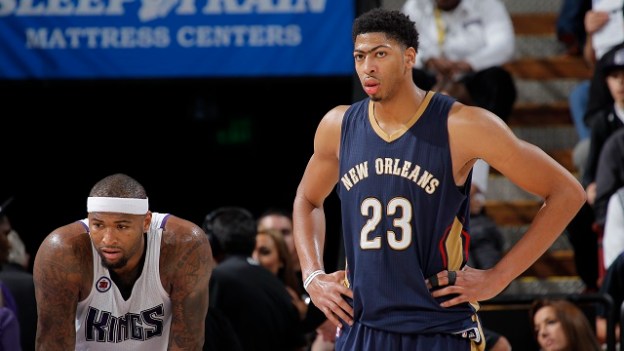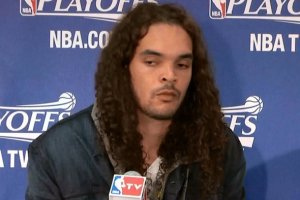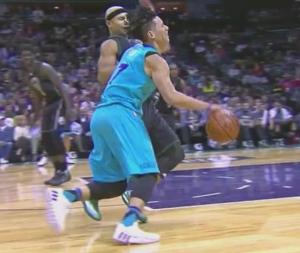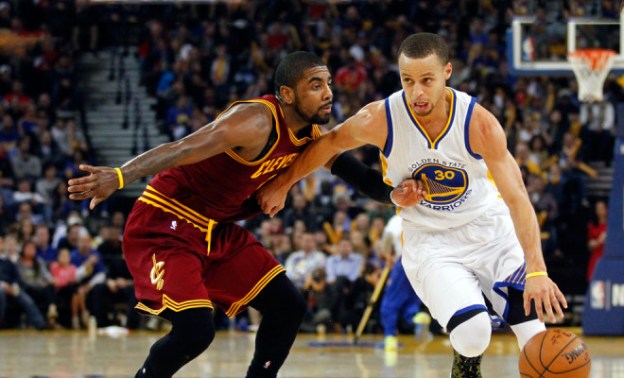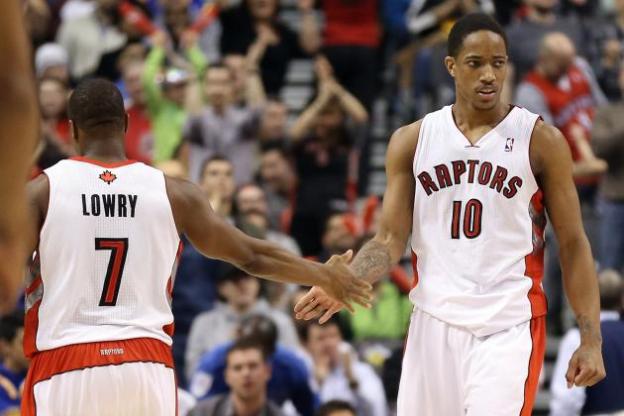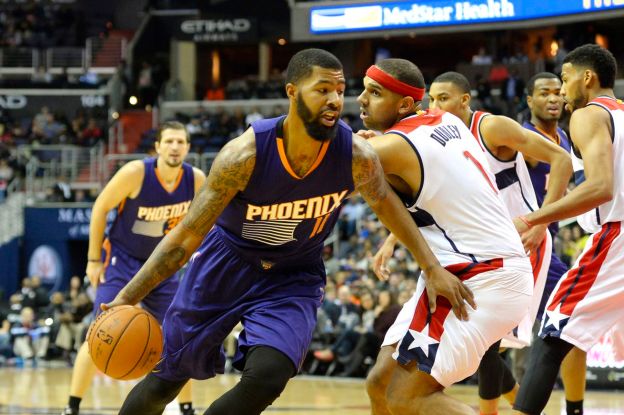Holy moly: DeMarcus Cousins (along with Omri Casspi) was just traded to the Pelicans for Buddy Hield, Langston Galloway, Tyreke Evans, a 2017 first round pick and a 2017 second round pick. Let’s break it down.
New Orleans Pelicans
A frontline consisting of Cousins and Anthony Davis, two top-fifteen players is insane. Is it possible to defend against two dominant offensive big men whose offensive arsenal seems unstoppable? Only a few teams have even a single player capable of defending one of these two superstars–none have enough to guard both. This pairing has the potential to be a big man version of Golden State’s Splash Brothers. All they need is a catchy nickname and they’ll be set.
There is a risk that Davis and Cousins can’t coexist on the court. Each is a ball-dominant player and average over twenty field goal attempts per game. Each is best destroying worlds near the basket, but there isn’t enough space for two behemoths down there. The Pelicans will need to spread the floor to allow them to play together. Cousins is shooting 35.4% from 3 this season, but Davis is barely over 30%, constricting New Orleans’ spacing. Still, with two elite talents on the floor, Alvin Gentry can and will find a way to make it work, likely through staggering their minutes somewhat, and using Cousins as more of a stretch-4 when playing with Davis. Of course, this runs the risk of robbing Boogie of a lot of his value, but superstar-level players tend to excel despite adverse situations, as Cousins can attest to based on his years in Sacramento.
We’ll delve more into the other players in the trade in the Sacramento section, but suffice it to say, the cost of acquiring Cousins was less than daunting for New Orleans. Plus, trading Evans frees the Pelicans up from feeling obligated to overpay him when he becomes a free agent after this season.
If the Pellies fail to resign Cousins, whose contract is up at the end of next season, then even without giving up much in the way of elite talent, their grade would be a D. However, if they manage to resign Boogie (or agree to a long-term extension with him this summer), New Orleans has hit a home run. Chances are the Pelicans will resign Cousins (they wouldn’t have traded for him if they weren’t confident that they will) so, while factoring in the slight risk that Cousins and Davis don’t mesh on the court, this heist is still an easy A.
Grade: A
Sacramento Kings
Hoo boy, this looks awful from the Kings’ side. Not only did they sell Cousins for thirty cents on the dollar, Vlade Divac and others have spent the last few weeks telling anyone who’d listen that they were planning on keeping Cousins around for the long-haul. This accentuates the abysmal reputation of the Sacramento front office, which will only make it more difficult for the team to land quality players.
Speaking of those quality players, trading Cousins was supposed to bring in a few of them to usher in the next era of Kings basketball. It didn’t exactly work out that way.
Evans and Galloway are both solid, if unspectacular players. Both are free agents at the end of the season (Galloway has a player option), and both will likely bolt Sacramento as fast as possible. That leaves Hield (the sixth overall pick in last season’s draft), and a first round pick as the main return for one of the best players in the NBA.
A 2016 first round pick (Hield) and a 2017 first round pick is already an underwhelming return for Cousins. However, after this trade, the Pelicans should exit the lottery, or at least head to the bottom of it, worsening the pick the Kings will receive. Hield isn’t particularly valuable either. He’s twenty-three, the same age as Anthony Davis, limiting his upside. While Davis leads the team, Hield averages 8.6 points over twenty minutes per game. Hield offers value as a sharpshooter, nailing 36.9% of his three point attempts, but you don’t trade DeMarcus Cousins for a package “headlined” by a three-point specialist.
Sacramento practically gave away a superstar, and gained little in the way of elite talent or valuable draft picks in return. Other teams, especially the Celtics, almost certainly offered more than the scraps that the Pelicans sent to the Kings. Unless there’s some behind-the-scenes stuff that hasn’t been leaked, this trade is indefensible.
Grade: F
